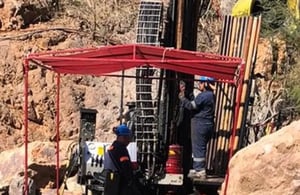RTX Corporation, listed under the ticker RTX, stands as a formidable player in the Industrials sector, specifically within the Aerospace & Defense industry. Headquartered in Arlington, Virginia, and boasting a market cap of $167.29 billion, RTX is a critical component in both commercial and defense aviation markets through its three primary segments: Collins Aerospace, Pratt & Whitney, and Raytheon.
Currently trading at $125.22, RTX has experienced a modest price change of 0.03%, with a 52-week range spanning from $99.55 to $135.66. The stock’s forward P/E ratio is 18.67, a key metric for investors considering future growth potential. However, several valuation metrics remain unavailable, indicating RTX’s financial complexity and the unique nature of its industry positioning.
Performance-wise, RTX has demonstrated a revenue growth of 5.20%, reflecting its resilience and market demand despite global economic challenges. The company’s earnings per share (EPS) stands at 3.41, and it has achieved a return on equity of 7.80%. Impressively, RTX has generated a free cash flow of over $5.7 billion, underscoring its robust operational efficiency and capacity to reinvest in growth initiatives or return value to shareholders.
For income-focused investors, RTX offers a dividend yield of 2.01%, with a payout ratio of 73.90%. This balance of income return and reinvestment potential makes RTX an attractive option for those seeking both growth and income.
Analyst sentiment towards RTX is predominantly optimistic, with 15 buy ratings and 9 hold ratings, and no sell ratings. The target price range for RTX is set between $114.00 and $160.00, with an average target of $138.29, presenting a potential upside of 10.44% from its current price. This indicates a positive outlook from the analyst community, driven by RTX’s strategic market positioning and growth prospects.
In terms of technical indicators, RTX’s 50-day moving average is $128.19, slightly above its current price, while the 200-day moving average sits at $121.47. The RSI (Relative Strength Index) at 59.22 suggests that the stock is neither overbought nor oversold, maintaining a neutral position amid market fluctuations. However, the MACD and signal line, at -1.84 and -1.36 respectively, may indicate short-term bearish momentum, which investors should monitor closely.
RTX’s diversified operations, spanning civil and military aviation, defense systems, and aerospace services, provide a resilient business model that aligns with the strategic priorities of governments and commercial entities worldwide. As the aerospace and defense sectors continue to evolve with technological advancements and geopolitical dynamics, RTX is well-positioned to capitalize on these trends.
For investors looking to add a stable, income-generating stock with growth potential to their portfolios, RTX represents a compelling choice. With its significant market presence, strategic initiatives, and consistent performance, RTX is poised to deliver value to shareholders in the foreseeable future.





































